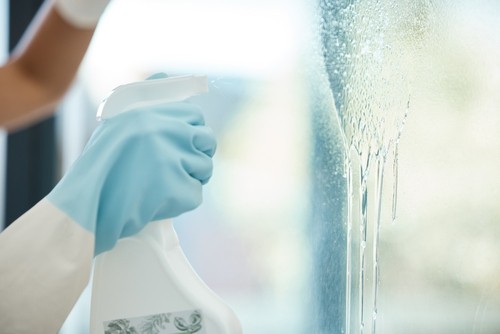
Spring Cleaning Service in Singapore
October 13, 2022
What Can I Do When Spring Cleaning My Home?
December 15, 2022How To Properly Sanitize Home Kitchen?
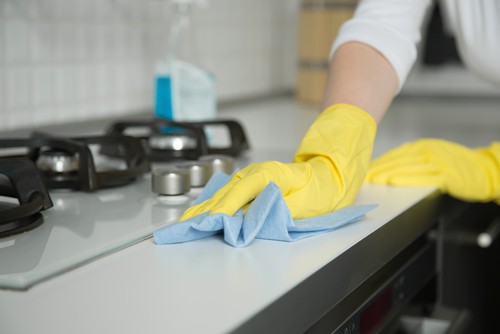
How To Properly Sanitize Home Kitchen? The kitchen is one of the germiest places in your home. Your sinks, food preparation surfaces, and countertops are all part of a breeding ground for microbes and can harbor harmful bacteria that can make you sick. In addition, it’s also one of the most trafficked areas in your home.
So it stands to reason that it would be heavily contaminated with bacteria and germs.
To reduce that danger, you must take proactive steps to clean and sanitize your kitchen properly. Cleaning your kitchen removes the dirt and grime that can harbor bacteria and other pathogens. Sanitizing your kitchen kills those bacteria and other pathogens. So how do you clean and sanitize your kitchen properly?
Table of Contents
ToggleWhat is the Difference Between Cleaning and Sanitizing?
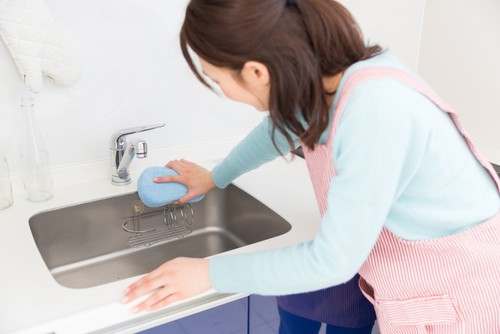
Cleaning is the process of removing food and other types of dirt and grime from surfaces. This can be done using soap, water, and other cleaning products. When you clean surfaces properly, you prevent bacteria and other germs from spreading.
Sanitizing is the process of killing germs and bacteria on surfaces by using chemical cleaners. This is important to do in addition to cleaning because it helps to reduce the risk of illness and cross-contamination. Sanitizing is usually done after cleaning has taken place.
What are the 6 Most Contaminated Areas in Your Kitchen?
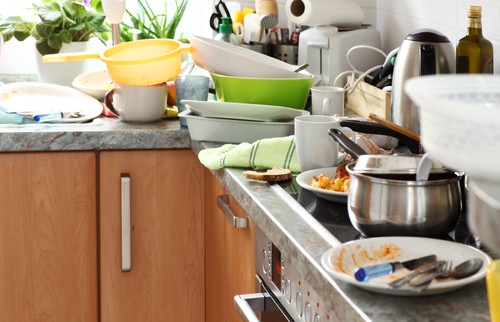
A few areas of your kitchen are more likely to be contaminated than others. These are the five most contaminated areas in your kitchen:
1. Sinks
Your sink is one of the dirtiest places in your kitchen. It’s a breeding ground for bacteria and where you clean your hands and utensils. Disinfecting your sink regularly will reduce the risks of cross-contamination and food contamination and make the sink less attractive to bacteria.
To sanitize the sink, flush it with hot water and bleach or baking soda, then clean it with a disinfectant cleaner every night to give it a deep clean.
2. Countertops
Countertops are another place where bacteria can easily spread. They’re often used as a food prep surface and can also be contaminated by raw meat and other food items. Wiping them down with a disinfectant cleaner every time you use them will keep them clean and sanitized.
3. Cooking Utensils
Utensils are essential in the kitchen but can also be a breeding ground for bacteria. Harmful strains like Salmonella and E. coli can be transferred from utensils to food, so it’s important to clean them regularly.
To clean cooking utensils, wash them in hot soapy water and then disinfect them with a bleach solution at least once a week. Ensure you rinse them thoroughly before using them again.
4. Faucets and Handles
Due to frequent use, faucets and handles can easily become contaminated with bacteria. To keep them sanitized, wipe them down with a disinfectant cleaner daily. Pay attention to the area around the faucet as well, as this can often be missed and become a breeding ground for bacteria.
5. Cutting Boards and Countertop Appliances
You risk ingesting harmful bacteria if you don’t clean these areas properly. Use a disinfectant cleaner to clean and sanitize cutting boards, coffee makers, can openers, and toasters at least once a week. Run a cycle of hot water and vinegar through your coffee maker once a month to clean it thoroughly. You should also replace your cutting board every few months because it can become warped and harder to clean over time.
6. Floors
Your floors can become dirty quickly, especially if you have pets or children in the house, tracked in dirt, food, and other contaminants. Before you mop your floor, sweep it to remove any loose dirt and debris. Then disinfect the floor with a solution of hot water and bleach. Mop the floor with this solution, and make sure to rinse it well afterward.
You should also vacuum your floors regularly to remove any dirt, dust, and hair that has been left behind. Pay special attention to areas where people tend to gather, such as around the dining table or in the living room.
Kitchen Cleaning Checklist
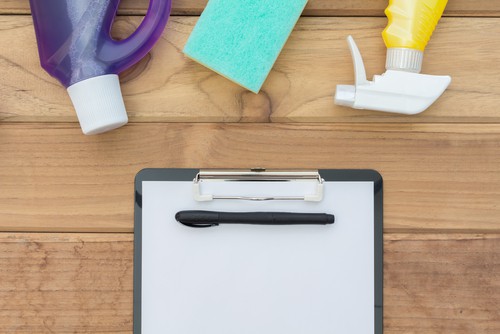
To help you keep your kitchen clean and sanitary, here is a checklist of tasks that you should do on a daily, weekly, and monthly basis:
Daily:
- Wash dishes in soapy water
- Wipe down the sink after every use
- Wipe down countertops with a disinfectant cleaner
- Sweep and mop the floor. Use a Swiffer for an easier clean
- Wipe down any spills or messes immediately
- Take out the trash and recyclables daily
- Wipe down door handles and light switches
Weekly:
- Deep clean the sink with bleach or baking soda
- Wash all cooking utensils in hot soapy water and disinfect them with bleach
- Wipe down all appliances with a disinfectant cleaner
- Vacuum the floors, paying special attention to high-traffic areas
- Sanitize sponges and dish rags
- Clean the inside of the fridge with a disinfectant cleaner
- Wash dish towels and rugs
Monthly:
- Run a cycle of hot water and vinegar through the coffee maker
- Clean the oven with a degreaser
- Wash all area rugs or carpets
- Dust all surfaces, including ceiling fans and light fixtures
- Wipe down the outside of the fridge with a disinfectant cleaner
- Wash curtains or blinds
- Clean and sanitize trash cans
- Empty and clean out all cabinets and drawers
- Descale any expired food items and spices
- Clean under and behind the stove and fridge
How To Properly Sanitize Home Kitchen? – Conclusion
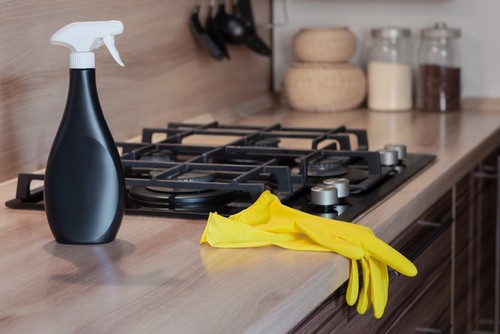
Now that you know what tasks need to be done and how often they should be done, it’s time to create a cleaning schedule that works for you.
One way to make sure you stick to your schedule is to designate certain days of the week for specific tasks. For example, you can do all of your deep cleaning tasks on Mondays and your weekly tasks on Thursdays.
You can also break up your tasks into smaller, more manageable pieces. You can break it up into two or three smaller sessions if you don’t have time to do a deep cleaning of your kitchen every week.
And finally, make sure you involve other people in your kitchen cleaning routine. If everyone in your household knows what tasks need to be done and when they should be done, it will be much easier to keep your kitchen clean.
A clean kitchen is a happy kitchen. By following these tips, you can ensure your kitchen is always clean, sanitary, and free of harmful bacteria.


